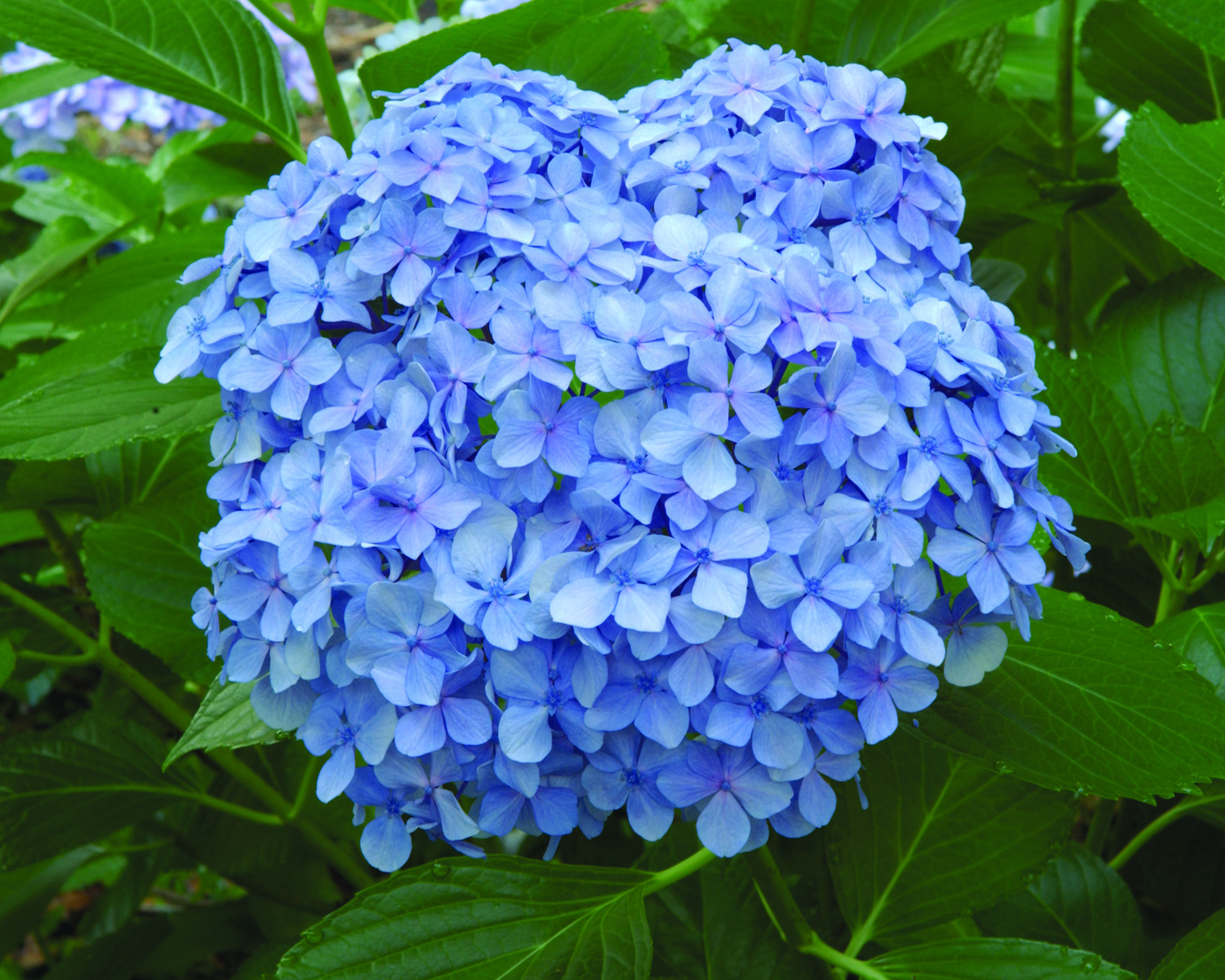Hydrangeas – Coloring With Epsom Salt

Q: I’ve been thinking about the notion of applying Epsom salts to hydrangeas to enhance the blue color. Since I have an old box of Epsom salts, I would like to try this, but the word “salt” sent up a red flag. How much should I apply?
A: The name “Epsom salt” comes from a bitter saline spring at Epsom, England, the water of which contains magnesium sulfate in solution. “Salt” is just a chemistry word for the product of a reaction between an acid and a base. Sodium chloride (table salt) comes from mixing sodium hydroxide and hydrochloric acid. Epsom salt comes from the reaction of magnesium metal and sulfuric acid.
Some salts are very hydrophilic – they dry and preserve materials they’re placed with – like salt cod or Virginia ham. Epsom salt is already hydrated and does not pull water from nearby materials.
When the ions of Epsom salt disassociate, they have a neutral effect on the pH of the soil. Since the blue color of a hydrangea is formed by aluminum made available in acid soil, adding Epsom salt would not make your flowers change color. Alum (aluminum sulfate) is acidifying and would give the effect you want at two tablespoons per plant.



















